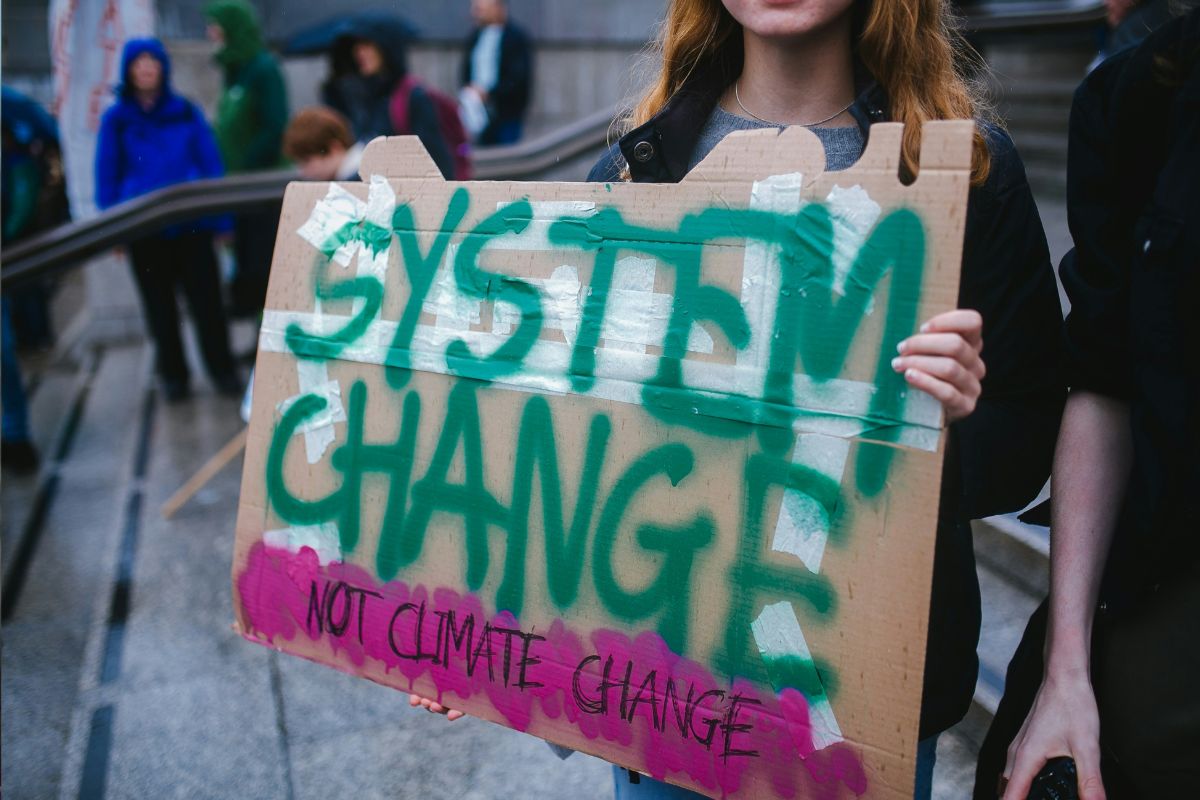
Parables of Earth is a recurring column from NPQ’s Climate Justice desk exploring the connections between climate and art. Inspired in part by Octavia E. Butler, this column expands our lens on climate justice and taps into our deeply human inclination for creative expression—for joy, for strength, and for imagining new worlds.
In the wake of the US presidential election, which saw the reelection of former President Donald Trump, some people turned to social media to express that they were logging off and tuning out. After a difficult election season and the uncertainty of the next administration, they had had enough.
But for those who work in or are deeply invested in social justice, including climate justice, disconnecting simply isn’t possible. Not for any considerable length of time. We must be informed so that we can respond. We must be tuned in to report, react, create, or reevaluate policies or programs and assist our communities in the best way possible.
How can we disengage without becoming indifferent?
Such readiness can bleed into hypervigilance. Mental health has become a huge concern for those invested in the environment, spiking stress and leading to depression, even despair. The escalating global climate crisis has given rise to mental health issues such as apocalypse fatigue, climate anxiety, eco-grief, and burnout.
As NPQ reported in June of 2024, in an article about the mental health of rural Americans battling climate change, “Adding to the mental and physical health impacts of severe climate events is the fact that they keep repeating. Experiencing a disaster such as a wildfire is a trauma. Every time there is a new fire or a new climate disaster—which happens around the globe with more severity and regularity—memories and stress responses come streaming back, even if danger is not imminent.”
In 2025 and beyond, we will be dealing with a US presidential administration that has called climate change “a hoax.” It’s no wonder people are logging off and tuning out.
Yet apathy is a danger not only to the planet but to the very thing we are trying to protect by disconnecting: our mental health. It can cause us to withdraw from family, friends, and social gatherings, becoming isolated and reducing our empathy. How can we disengage without becoming indifferent?
Start small, start imperfectly.
With this new column, Parables of Earth, NPQ will be focusing on an area with perhaps an unlikely connection to climate justice: the arts. Not only are there compelling parallels between the scientific world and the creative world—in both, we as humans are trying to understand and describe our world—but art in any and all forms can also be a balm during these difficult times. Artmaking can be a way to keep going without giving up.
Sign up for our free newsletters
Subscribe to NPQ's newsletters to have our top stories delivered directly to your inbox.
By signing up, you agree to our privacy policy and terms of use, and to receive messages from NPQ and our partners.
The Power of “Flow” States
The mental health benefits of art have been well-documented. A Frontiers in Psychology article from 2021 described “significant improvement in the apathy scale and quality of life after 12 weeks of painting treatment mainly including color abstract patterns with pastel crayons or water-based paint.” The article goes on to cite multiple studies and research that a variety of mental health conditions, including cognitive issues, depression disorders, and anxiety, are all helped by various forms of creativity in practice.
This is partially due to a psychological term often known as “flow”: a mental state in which a person doing an activity—such as painting, playing the piano, dancing, or writing a story—feels fully immersed in that activity. The world falls away, even our current, very challenging world. And that’s good news for the brain.
As the Guardian wrote in 2024, “One theory has been that the flow state arises from reduced activity in the prefrontal regions of the brain, which are typically associated with ‘higher-order thinking’ and self-awareness. The idea was that you go into a form of autopilot without deliberating over every decision.” That’s especially important when news of chaotic governments and repeated, severe climate events are bombarding us constantly, leading to decision overwhelm and a sense of powerlessness.
You need self-care in order to be selfless.
An Imperfect Practice
What kind of art are we talking about? What creative activity leads to flow?
Anything that engages you enough to get into it. Start small, start imperfectly. Start. Take an art or music class if you have the space and resources. Or just keep a sketchbook at your desk. Take it out when you have a moment—when you need a moment.
Try something new that challenges you, but most importantly, make your art just for you. As Octavia E. Butler wrote, “Every story I create, creates me. I write to create myself.” It doesn’t have to be for financial gain or promotion. It doesn’t even have to be for the movement. It may feel cathartic to paint the threatened, natural world right now—but it may feel better to choose an entirely different topic. Draw a picture of your pet, or learn a song on the piano by one of your favorite musicians from childhood.
You may feel guilty about escaping through art, even for a little while. But the world needs you at your best. The world needs you rested and renewed. You need self-care to be selfless, and art is a place you can go now. Art is a safe escape. Make art and help make yourself strong enough to fight another day.
For More on This Topic:
“What Can Art Teach Us about Climate Change?”











